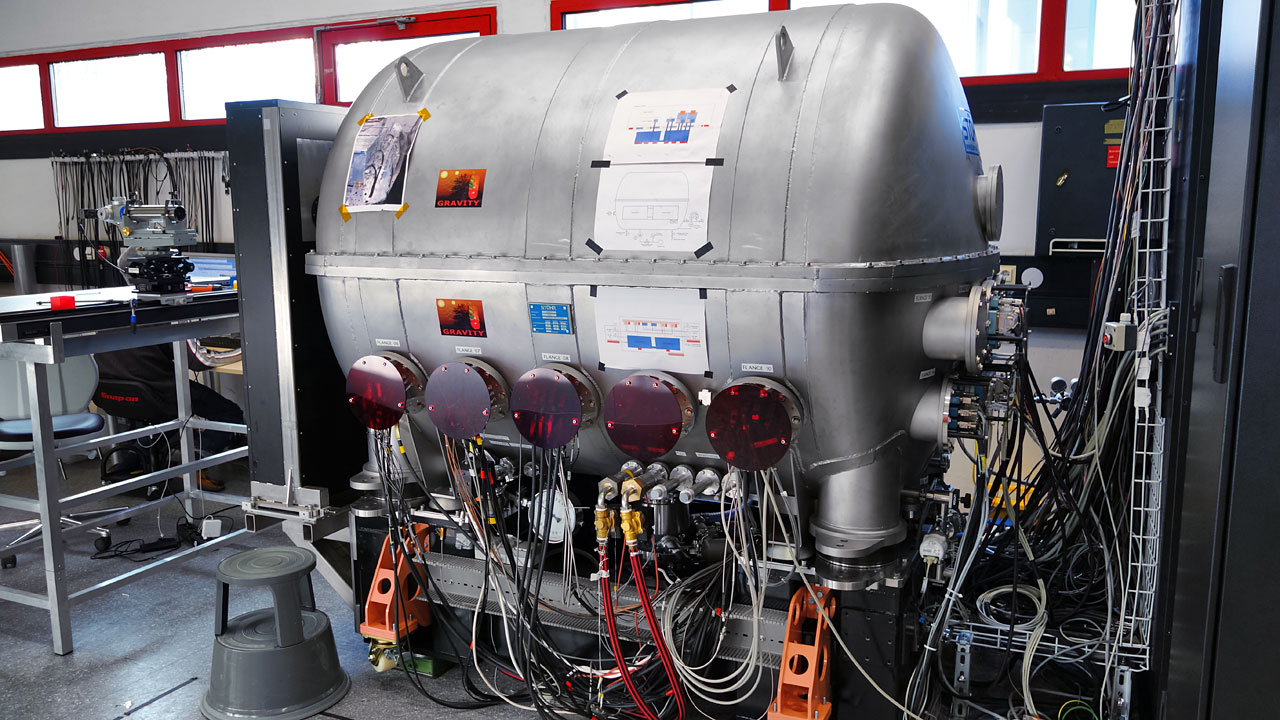Future instrument for studying black holes makes discovery in first observation

GRAVITY is the most powerful instrument installed to date at the Very Large Telescope Interferometer (VLTI), the most advanced telescope in the infrared light region in the world, located at ESO's observatory in the Paranal Desert in Chile. GRAVITY's main goal is the study of black holes. This week, the ESO announced the first observations made by GRAVITY. A team from the CENTRA - Multidisciplinary Center for Astrophysics of the Universities of Lisbon and Porto participated in the construction of this powerful instrument.
Already considered ESO's scientific priority for the foreseeable future, GRAVITY combines the radiation captured by several telescopes to form a virtual telescope with a diameter of up to 200 meters. It uses a technique known as interferometry, which makes it possible to detect much more detail in images of astronomical objects than is possible with a single telescope. In its first observation it has already made a small discovery: one of the stars in the cluster located in the heart of the Orion region is a double star.

CENTRA's Portuguese team built the instrument's acquisition camera. This system tracks astronomical objects and corrects residual aberrations introduced by the Earth's atmosphere and by small mechanical vibrations of the instrument in the light beams that are combined, allowing the instrument's exceptional accuracy to be achieved.
After this phase, the Portuguese team is preparing the scientific exploration of the instrument, focusing on the study of the black hole at the center of our galaxy, and the study of the origins of stars and planets. The Portuguese participation in the GRAVITY instrument was partially funded by the Foundation for Science and Technology (FCT).
Images, from top to bottom:
- GRAVITY - future black hole probe
- GRAVITY discovers new double star in the Orion system.
(Source: ESO - European Southern Observatory)